It was once all fun and games to watch a video on TikTok and relate to whatever artistry that was presented in it, until you tap to view the comments section and see an overwhelming number of social media users asking, “What aesthetic is this?” or the most utilized question of them all, “What core is this?”. It was actually no surprise to witness people choosing to categorize almost every little detail, since our generation somewhat has trouble finding peace within the mundane. Not everyone I know has simply tried sitting with whatever the reality of their situation is and strived living for a while. You know, at least attempting to let go of control. One shall define a label and refine the oversimplification one has set upon it— for that was is the goal, to make everything, or even everyone interesting. After all, we are convinced that to be who we are is to be extraordinary. However, this trend of being anything you want has evolved into something dystopic and eerie, thanks to the bestowed blessing of core-ifying everything. And believe it, this is how we are (and always have been) with our relationship with clothes or fashion.
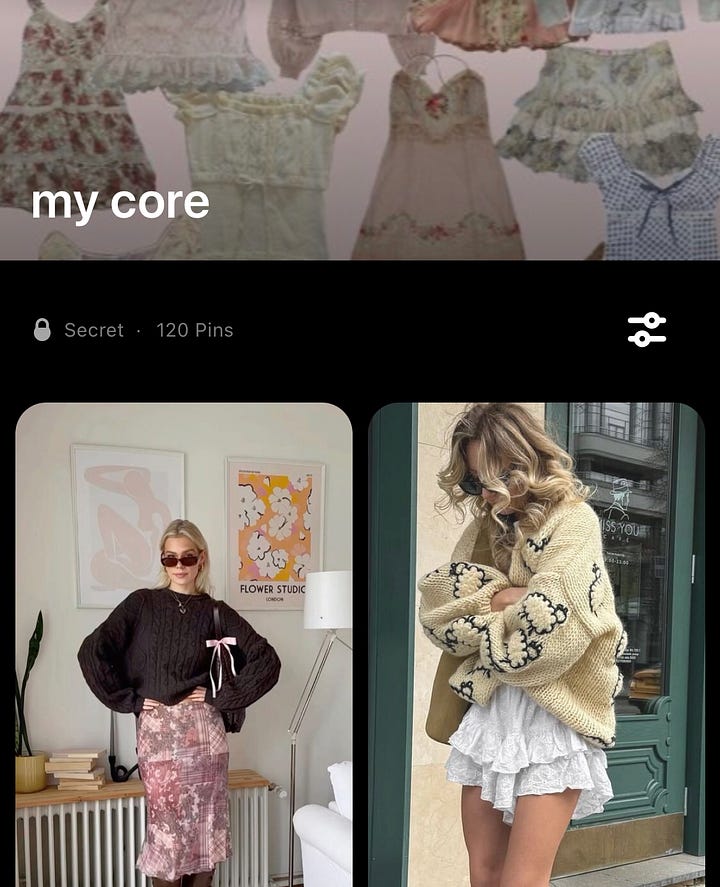
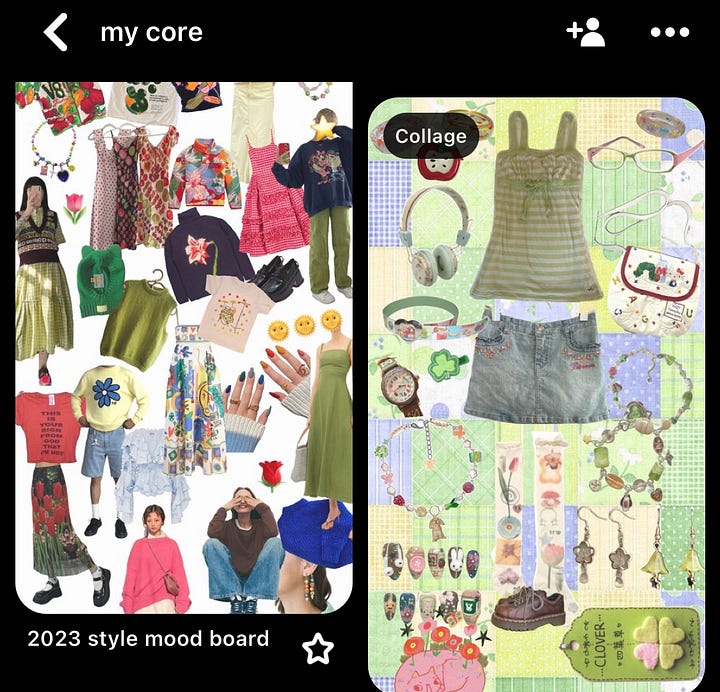
Questioning on how we form our own identities requires someone to drink three or four black coffees in only under five minutes; basically, finding it will send you to another alternate universe for it can be quite an existential thing to do. Trying to know oneself is not done overnight, isn’t that obvious? If it was that easy, then everyone would have been already figuring out their own puzzles that are present in their lives, without any help. The formation of our identities requires a lifetime of hard work and most especially, through the help of our own communities and circumstances.
I had always been confident with who I was (not until I turned 18), but I’ve realized more about myself and what else I can offer to the people around me, in my case, during the pandemic. When the lockdown happened, I became someone who was obsessed with my own physicality and how I present myself. Mind you, I was never like this. I even wrote an essay for that. I did not grow up to be entirely chronically online, pre-pandemic, which is why I barely know anything about Tumblr culture. I was the kind of girl who liked living in the moment while being aware that I am not that physically attractive, and I was okay with the feeling of being ordinary. But everything changed when I let social media dictate who I can be for the day through the “cores” that dominated our internet algorithms.
So, before anything else, let me start by saying, stop making “—cores” happen! It will never happen! I’m just kidding, of course. It has been existing since the 1980s yet its meaning and intentions have been watered down. I feel like a mean girl but know that this essay comes from a place of love as I call out those who obsess over labels instead of simply letting things be or taking the time to do their own research about what people wear. But let’s get back on track; what exactly are these 'cores' or aesthetics, and when did they begin to emerge across various social media platforms, anyway?
As stated by the UrbanDictionary, the suffix “-core” can be added to a word for two main purposes: to create a new subgenre or to indicate that you are a part of a specific group. Yet through the magic hashtags present in social media, the suffix “-core” became anything else we can think of since it is easier to find similar clothes we want if we collectively decide to enclose everything into a category. And these cores that continue to pop out and somehow, manage to still exist, are all built around two identical ideas that work hand-in-hand: commodification and capitalism.
The term aesthetic, however, has been long existing since the 1700s, mostly, philosophical from within its own nuance. Today, aesthetics has gained an almost entirely different notion, particularly in lifestyle and clothing choices. Picture this: you wake up, head straight to your bathroom to do your usual 7-step skincare routine, throw on your Lululemon jacket, and then decide to pair it with your black leggings and New Balances. Next, you then fill up your baby pink Stanley cup with either water or some healthy but oddly named fruit shake, and once the clock starts to strike at 7:30am, you begin to leave your overly priced apartment to go to your local gym. Finally, you end your morning routine with a whole hour of Pilates exercises. This is what we call the Pilates Princess. It is just one of the many aesthetics or cores people participate to, all over the world.
Back in 2020, like I said, was the time I discovered I wanted to participate and relate to the people around me through clothing. I remember it being the time where people have come together to obsess over the Art Hoe aesthetic and the most iconic one yet, the Indie Kid core. The overly saturated editing of our pictures, cow prints, and that strawberry dress (you know what I’m talking about)— are just one of the many spectacles we can associate of what being an Indie Kid was like during the pandemic. Little did we know that it will also mark the start of putting “—core” in almost everything.
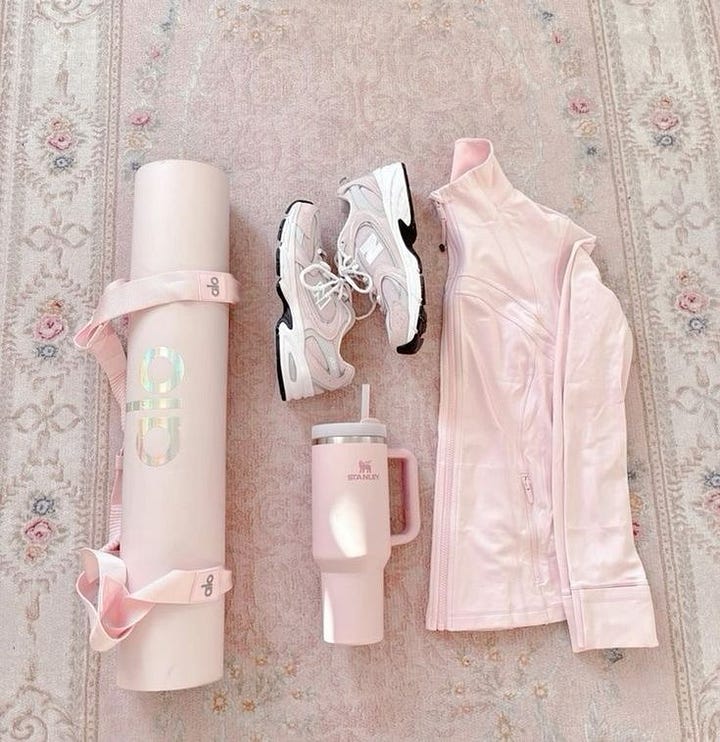
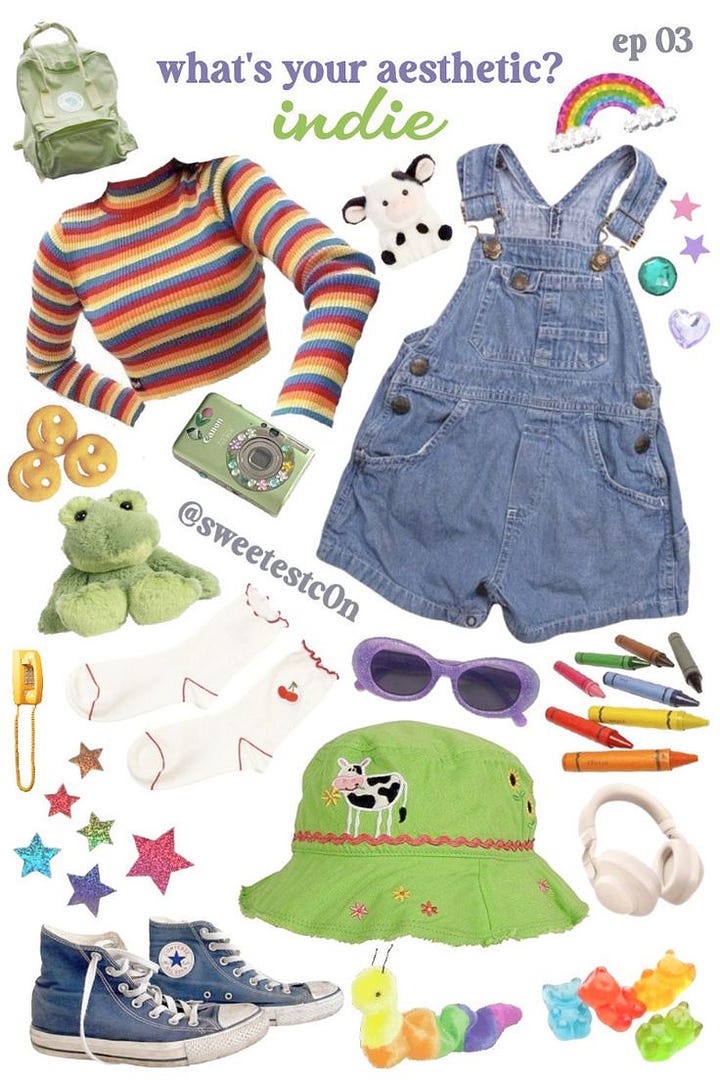
“Social media aesthetic labels often experience very rapid trend cycles, so they are aptly referred to as microtrends. Quiet luxury, Old Money, That Girl, It Girl, Clean Girl, Tomato Girl, Vanilla Girl, Office Siren, Fairycore, Cottagecore, Coquette, Blokette — what are these terms even? The list goes on. Most of these terms are attributed to a certain look, whether that be makeup, fashion, or both. Not only are they attributed to a certain look, they also signal a certain lifestyle.”
— bao on their essay, “The Cult of Online Identity Curation and Social Media’s Fixation on Aesthetics” at Medium, published on July 28, 2024.
Like what bao has mentioned, these terms or aesthetics have been attributed not only with makeup and fashion but also with a person’s lifestyle. And yes, I know you might say, dear reader, that if one has been envisioning a kind of lifestyle connected to the core that they want, then maybe they are trying to form their probable identities based on this given aesthetic. And yes, you are right about that. Yet times have changed. If the early 2000s had been glistening with so much personality and subcultures (Emo, Scene, and etc.) were not only at its peak but we also have had let it ruminate for a while, the 2020s however, is begging to differ. Today’s generation of trendsetter’s problem is not with how we envision ourselves living with the kind of core we want; it is the fact that the most of us think we can curate our being and most especially, our lives. Our unpredictable and ever-changing lives.
I’ve said this a lot of times, but I will say it again— we, humans, yearn to belong. We did not create cores out of nothing or because of the spur of the moment. We created this because we seek to find community or people that we can relate with. And when there is someone to relate to, identities start to form. It just also happens that we live in a late-stage capitalistic system wherein trends appear and vanish in a blink of an eye. We also have to understand that clothing became our outlet in finding ourselves because it’s the most accessible for everyone. And what’s most accessible is also what can be utilized against us by the market through algorithms and mostly, consumerism.
So, how exactly does this obsession over “—cores” ruin our formation of identities?
Begin with imagining that I am holding your hand as I am about to say something so (but not so) controversial to your face— we do not try to live outside of the cores presented or we present ourselves. Instead, we romanticize to a point where our sense of reality may subdue. This obsession in making everything presentable and pleasing to our eyes and everyone else’s, can create a life not lived but performed.
What does go beyond whenever we ultimately try to maintain the curation of how we dress? Or at most, how we live?
Curation is what ruins every part of our whole being. From what songs we must use to put on our Instagram posts up to what kind of inanimate objects we must own in order to fit into a categorization, ultimately considering that this might be your key into finding who you truly are. News flash, kid! Like what I’ve said here, because of capitalism, we have been convinced that personalities are commodifiable. And when these are commodifiable, we may grow into thinking that everything else is and can be dispensable.

“In desperation to churn out new content for that sweet, sweet social validation, we become all but puppets on the strings of a system that thrives on turning our personalities into a commodity.”
— Kimberly John Bautista on their essay, “I'm Not Like the Other Girls! (On Micro-Individuality and Self-Commodification)”, at Esquire, published on March 9, 2023.
Companies, algorithms, and ultimately, social media, is selling us an image of appearance and it does not introduce us to what goes beyond, which are the shared values, community, and advocacies of the core’s essence. Since we were only sold an image, then our clothes are not our clothing at all, these are costumes. We are only performing the kind of person we wish to appear to be and not living the person and its depth that we should wish to become.
This is why the conversations going around subcultures are extremely relevant. And we’ll be talking about this more in a bit. At the end of the day, you’d hate to hear this, but clothing—fashion is political. People nowadays only want to dress interestingly and without actually making the effort to educate themselves about the story behind what they are wearing. Since in the first place, performance is the only thing they care about— nothing else.
“In contrast, “cores” seem to be all aesthetics with little substance—they are there to dip the toe into, flirt with and move on before the next one comes along. Aesthetics and cores are filtered through the trend cycle so fast that fast fashion can’t even keep up and they have spawned the “micro-trend”.
Where subcultures created a fashion revolution, “cores” bring Jean Baudrillard’s theory of Simulacra and Simulation to mind, i.e. we have replaced reality with symbols and signs, and reality, as we know it, is merely a simulation. Basically, we’re all posers. We’ve niched so far down, we’ve gotten lost in the sauce.”
— Chronically Online on their essay, “Cores, Aesthetics and The Death of Subculture” at Substack, published on February 1, 2024.
I think it’s important to highlight from the quote above that we are all posers. We have been sold a lifestyle over the years, and we were made to believe that it’s easily attainable if we decide to buy a piece of clothing associated with it. I’m no saint and of course I had already fell victim to it not only once; but millions of times. I once wanted to become a “shoujo girl” who’s always looking mysterious but still feminine and studious looking enough. And so, with that, I bought a Rory Gilmore-inspired sweater from Gap. Man, did that experience truly drain my wallet (and my patience).
At the core of the core, there is a distinct lack perpetuated by us; and it is the inability to desire something beyond the performance—beyond what we want our outfits to portray and the lifestyle that comes with it. We have to understand that there is a difference between how we want to be seen and who we actually are, either through the values presented of our clothes’ inspirations or just the identities we are forming, in general. It's never simply what we want to appear to be— it should always be about being.
Gentrification is another problem we are facing on why we have trouble finding our identities. My usage of this term is metaphorically extended to describe the commodification or mainstreaming of once-authentic, niche styles or values. Anyway, remember what I said about our obsession with having a sense of belongingness? It is because subcultures are almost at meeting its demise, and our ruthless chase on trends after trends is what keeps “community” alive through our online presences and spaces.
Aestheticism is what happens when subcultures are stripped down off of its actuality, ultimately becoming a more palatable, hollowed out, and repackaged version of what once was filled with life— with an actual identity. Fashion has become a mere “entertainment” (the wrong side, if you know what I mean) and not a tool for expression or basically, for lifestyle changes (that is something enlightening— revolutionary per se, not just revolving around consumerism).
The existence of subcultures is truly where you can make your own or find your community. But nowadays, with the emergence of cores, it has made it almost impossible to find people who have strong commitments and interests as you! And because of this, we have formed a trauma bonding, as I’d like to call it, and this bonding is responsible for the continuous birthing of different cores; the pressure of partaking in consumerism.


There are things one has to consider to be able to call themselves part of a subculture; one, you must have the same shared values and beliefs of the community you identify with. Secondly, you must be able to partake or have engagement in the lifestyle and advocacies that these subcultures uphold (most of them are revolutionary like having anti-fascist campaigns, advancements on the radical feminism movement, etc.). And lastly, having the commitment on its culture beyond the aesthetics it represents. One good example is the Gothic fashion.
“The goth scene started in the late 1970s and early 1980s after punk music. Bands like Bauhaus, Siouxsie and the Banshees, and The Cure began a new type of sound mixing rock, punk, and dark styles. Their songs had dark and personal lyrics, moody melodies, and really focused on feeling and emotion.
Those early dark rock groups fascinated many unhappy teenagers at the time, who found comfort in the subculture’s interest in scary, sad, and unusual things. The way dark fans dressed and looked, with black clothes, pale faces, and use of spooky pictures, soon became the clear style of the subculture.”
— angelatempest on their essay, “The Gothic Lifestyle: A Beginner’s Guide to the Macabre Subculture”, at Gothic World, published on April 17, 2024.
This is one of the most famous subcultures even in today’s time that it went to a point where companies have gentrified and commodified the aesthetics Gothic fashion represent.
Subcultures are defined as cultural groups within a larger culture that have beliefs or interests different from the mainstream. The common denominator among them (of core-ification) is their involvement in the online fashion community, but that community does not embody specific beliefs.
— Alina Amin on their essay, “The Impact of “-Core” Fashion Trends: Diluting Subcultures and Niche Aesthetics”, at Title Mag, published on March 31, 2023.
How can one form an identity when we have diluted not only our personal styles, our involvement in them, and the beliefs the subcultures represent due to the influence of cores?
What I’ve noticed with the coreification of everything is that, there really is no common ground aside from the fact that they dress similarly and that you have to participate in spending your money to maintain it. Whilst the essence of the existence of subcultures diminishes this thinking since consumerism is not the common ground for these communities to thrive; it is the fact that they have something to believe in the advocacies that they uphold and to truly be themselves, beyond what they wear. Identity formation through the help of others is possible when we treat clothing holistically. The mainstreaming of these cultures’ styles has given false hopes that you will be able to form a connection with it genuinely, without having to submerge yourself in the culture; wearing the wholeness of it is enough. But the truth is you cannot buy your way into identity.
“The problem lies in turning actual movements into fleeting trends without preserving their original values. Subcultures play an important role in creating a diverse understanding of society, even if their ideas do not reach the mainstream. While drawing inspiration from subcultures is acceptable, commercializing these aesthetics and labeling them “-core” diminishes their original meaning.”
— Alina Amin on their essay, “The Impact of “-Core” Fashion Trends: Diluting Subcultures and Niche Aesthetics”, at Title Mag, published on March 31, 2023.
After all, what you wear is not the be it end all of trying to find your own identity. Subcultures are just one of the many things that you can consider to be a part of, to know more about yourself and the people around you. We have become more alone than ever especially with the emergence of technology (again, the loneliness epidemic) and the more alone that we are, the more we know less about ourselves since there is no community to share our wholeness of our being. And this is just one of the few things that is happening whenever we continuously categorize ourselves. There is harm in oversimplification. We should be more aware of the intentions on why we involve ourselves in different trends, particularly, in participating in the different cores of fashion.
Aesthetics have become self-identifiers which is now causing the slow death of subcultures. Just always ask yourself this whenever you find yourself wanting a community to relate with when it comes to clothing; is our concept of belongingness only within the parameters of what we wear and what our aesthetics represent?
Let’s wrap this up since I think I’m just going to go on forever about this if I never stopped. I might also go overboard and discuss materialism according to Karl Marx and go down a rabbit hole of why we are the way we are now about clothing— but that is another story I am saving for another day.
Superficially made aesthetics have dominated over authenticity. I genuinely think we loved Brat because it was messy but most of all, because it was authentic. It was rebellious— it was unconventional. It was not trying to cage itself rather it runs freely wherever it wants to go. And that is how we should be about finding our own personal styles. And once we have truly found it, we would even thrive more through sharing this with our communities while at the same time using our resources to better understand why we wear what we wear now— this is the first step in knowing who we are and our perspectives in life (through resonating with it).
We are beyond what we wear. We are beyond every microtrend released. But most importantly, we are beyond with the labels we have presented for ourselves. We must become the people who strive for a future where we help each other find ourselves and not completely limit ourselves with whatever the algorithm has presented to us. No, you are not a clean girl, you are a person who loves cleanliness, and you can be beyond that, even messy. No, you are not twee, you are weird (I mean this in a beautiful way because I too, am weird) and thank yourself for embracing it, just don’t overconsume whatever trinket you relate to and then dispense it right after you are done posting about it on social media. Do not let your identities become tied to these material possessions and be forever stuck to the cycle of consumption. Live too, do not perform. Dream deeply, find meaning and intention.
What goes beyond what we wear are the values, beliefs, and lived experiences that form our true and own identity. Clothes will only take us so far, maybe, in finding our community. But knowing who you are does not stop there. Let the layered wholeness of your identity transcend and take you somewhere beyond your aesthetic.
Suggested Readings/Video Essays:
Mina Le’s “let’s talk about the rise of “-core” and “girl” aesthetics”.
Cozybao’s “The Cult of Online Identity Curation and Social Media’s Fixation on Aesthetics”.
Another one of Mina Le’s the death of personal style



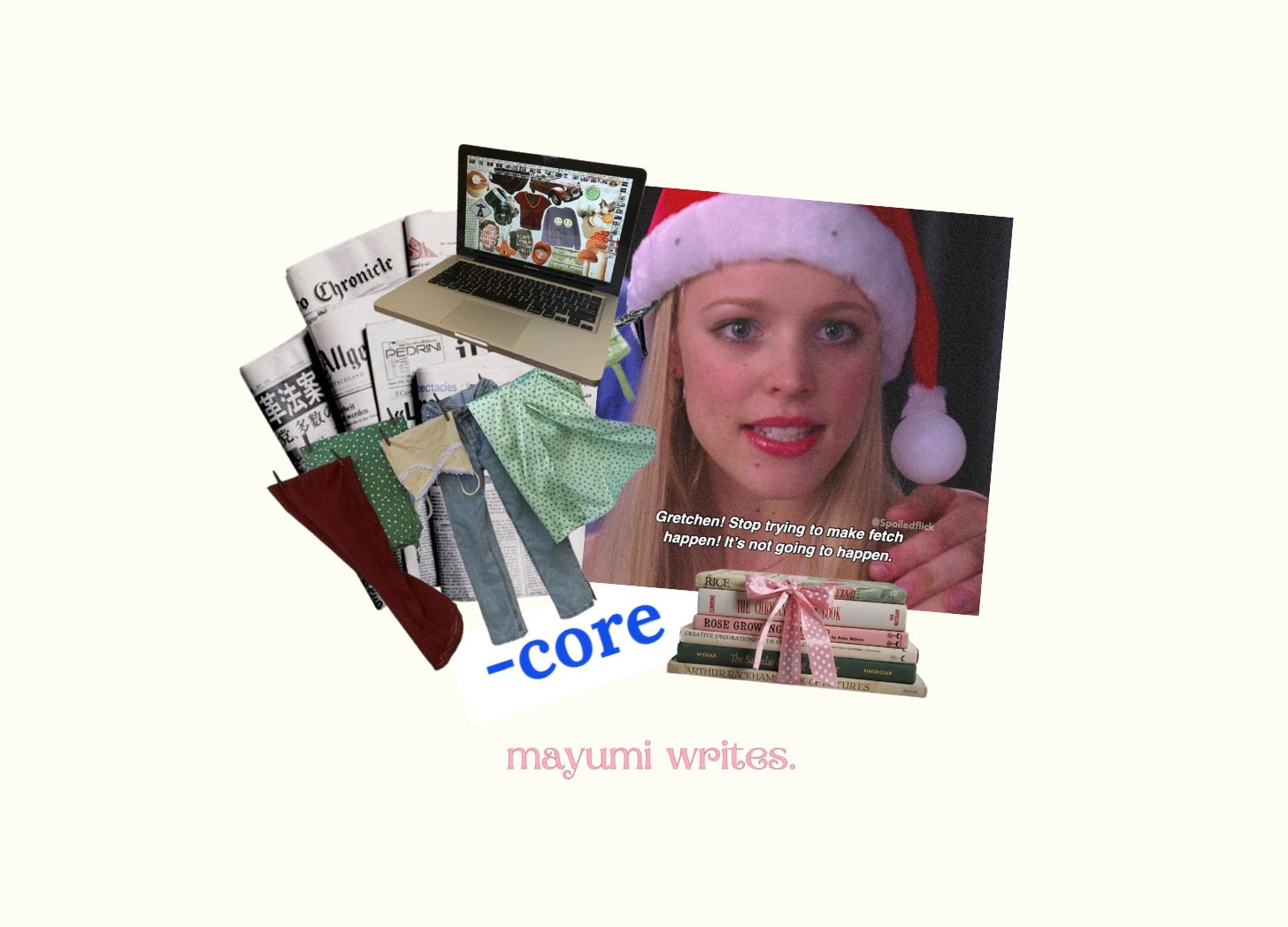

i've been so excited for you to upload this and it's amazing! i really do dislike how uniform people are trying to become and i think that the accessibility of everything eg amazon links etc makes it easier for everyone to be the same.
Loved reading your thoughts on this!